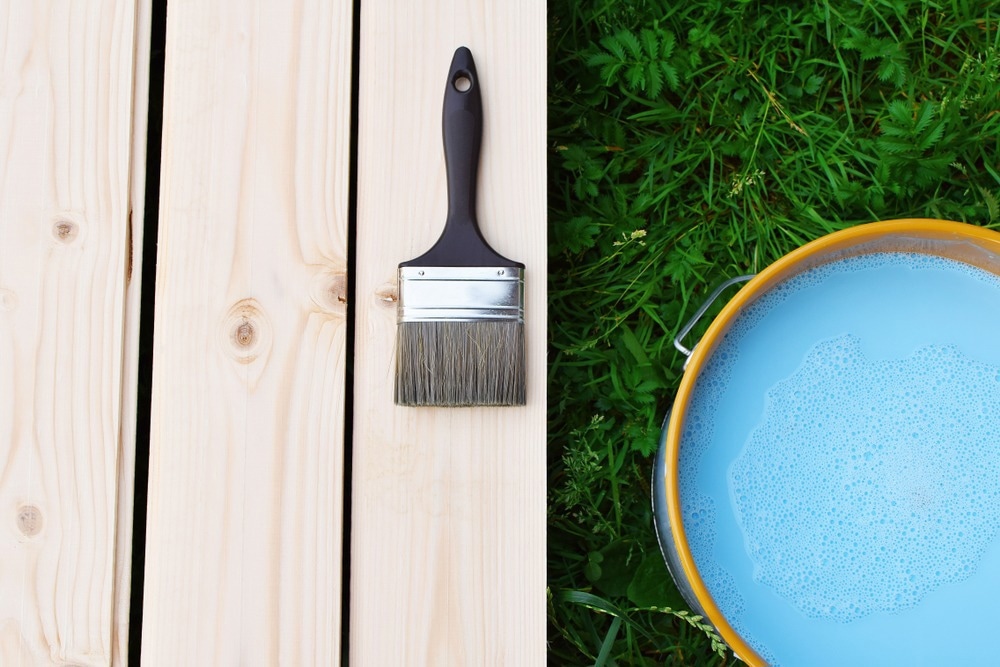Waterborne wood coatings have become popular materials for industrial wood applications due to their attractive finish and cost-effectiveness. However, typical waterborne wood coatings suffer from poor scratch and impact resistance.

Study: Performance of Advanced Waterborne Wood Coatings Reinforced with Cellulose Nanocrystals. Image Credit: ingae/Shutterstock.com
This issue is addressed in a recent study published in the journal ACS Applied Bio Materials, which proposes cellulose nanocrystals (CNCs) as a reinforcing filler for improved waterborne wood coatings. The research looks at how cellulose nanocrystals affect waterborne wood coatings in terms of coating, visual, physical, and water permeability characteristics.
Cellulose Nanocrystals: An Ideal Material for Coating Technology
Cellulose nanocrystals (CNCs) have recently become potential materials for application in materials engineering and medical technology due to their unique qualities like recyclability, tuneable surface composition, mechanical capabilities, cytocompatibility, and optical characteristics.
Cellulose nanocrystals can be utilized as reinforcing fillers in coating technology because of these distinguishing characteristics. Coatings are used in various industries, including building, vehicles, furniture, and manufacturing. They shield the underlying material from the damaging impacts of harsh climatic conditions such as high temperatures and strong winds.
Coatings are largely beneficial when applied on wood to protect it from mechanical degradation such as scratches, avoid discoloration caused by oxidation and UV radiations, prevent microbiological decay, and enhance aesthetics.
What Are Waterborne Wood Coatings?
Solvent and oil-based wood coatings are traditionally used because of their capacity to create a high sheen, water repellence, and toughness. Oil-based coatings, however, have a significant environmental effect owing to the leakage of volatile organic compounds (VOCs) into the ecosystem.
As a result of environmental legislation and customer demand, waterborne wood coatings, which are dispersions and microemulsions of polymers with much lower VOCs, have progressively replaced oil-based coatings. However, common waterborne wood coatings have some inherent problems.
Waterborne wood coatings have a lower glass transition temperature, lack the gloss of oil-based coatings, and have terrible wearability owing to increased water and gas permeability. Furthermore, waterborne wood coatings are particularly water-sensitive, resulting in significantly diminished mechanical characteristics and an unattractive haze and water rings.
Cellulose Nanocrystals as Fillers for Waterborne Wood Coatings
To address these concerns, a new class of innovative waterborne wood coatings is emerging that enhances these qualities, which is split into two subgroups: polymer compositions and curable coatings. Cellulose nanocrystals have also recently been employed to improve the properties of waterborne wood coatings.
The hydrophilic hydroxylated surface of cellulose nanocrystals (CNCs) allows for efficient adhesion between the cellulose nanocrystals and the matrix material. As a result, cellulose nanocrystals can be used as appropriate reinforcing fillers in waterborne wood coatings. Introducing cellulose nanocrystals to waterborne wood coatings can increase durability, scratch tolerance, and UV protection without compromising optical clarity, color, or shine.
In certain situations, the inclusion of cellulose nanocrystals can modify rheology, making waterborne wood coatings more shear-thinning, which is frequently desired in coatings. However, practically all research in this area has focused on typical wood coating materials, with little attention paid to the latest wave of waterborne wood coatings.
Highlights of the Current Study
In this work, the researchers looked at the influence of cellulose nanocrystals on sophisticated waterborne wood coatings to see whether these cellulose nanocrystals may provide any meaningful improvements in advanced coating systems. This research used an aqueous poly(carbonate) urethane as an enhanced composition and an aqueous blended alkyd paint as an example of a durable formulation.
The researchers' primary focus was the physical, visual, viscoelastic, and water-sensitivity features of waterborne wood coatings modified with cellulose nanocrystals. By altering their percentage throughout the studies, the effect of cellulose nanocrystals on the overall performance of the various waterborne wood coatings was also studied.
Key Findings
Waterborne wood coatings enhanced with cellulose nanocrystals outperformed unmodified, plain coatings regarding scratch resistance and damage tolerance. Moreover, cellulose nanocrystals caused a considerable decrease in water vapor permeability and absorption.
However, greater cellulose nanocrystal concentrations darkened and lowered the shine of the waterborne wood coatings. While 10% cellulose nanocrystals caused aggregation in aqueous wood coatings, 1 wt% cellulose nanocrystals held the greatest promise since they had identical color, viscoelasticity, and sheen to the unaltered coatings while improving scratch, damage, and water resistance.
Reference
Khan, M. N. et al. (2022). Performance of Advanced Waterborne Wood Coatings Reinforced with Cellulose Nanocrystals. ACS Applied Bio Materials. Available at: https://pubs.acs.org/doi/10.1021/acsabm.2c00383
Disclaimer: The views expressed here are those of the author expressed in their private capacity and do not necessarily represent the views of AZoM.com Limited T/A AZoNetwork the owner and operator of this website. This disclaimer forms part of the Terms and conditions of use of this website.